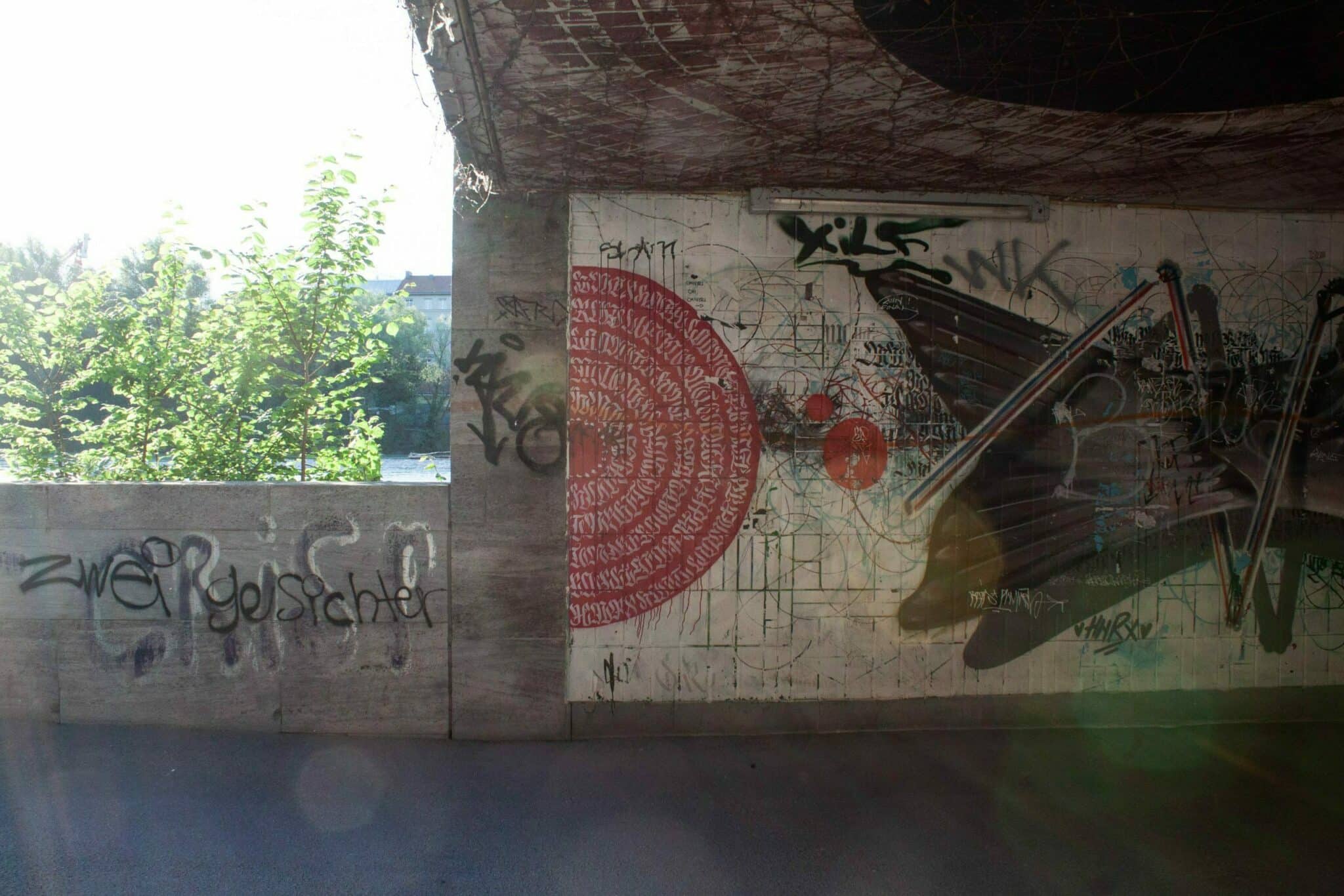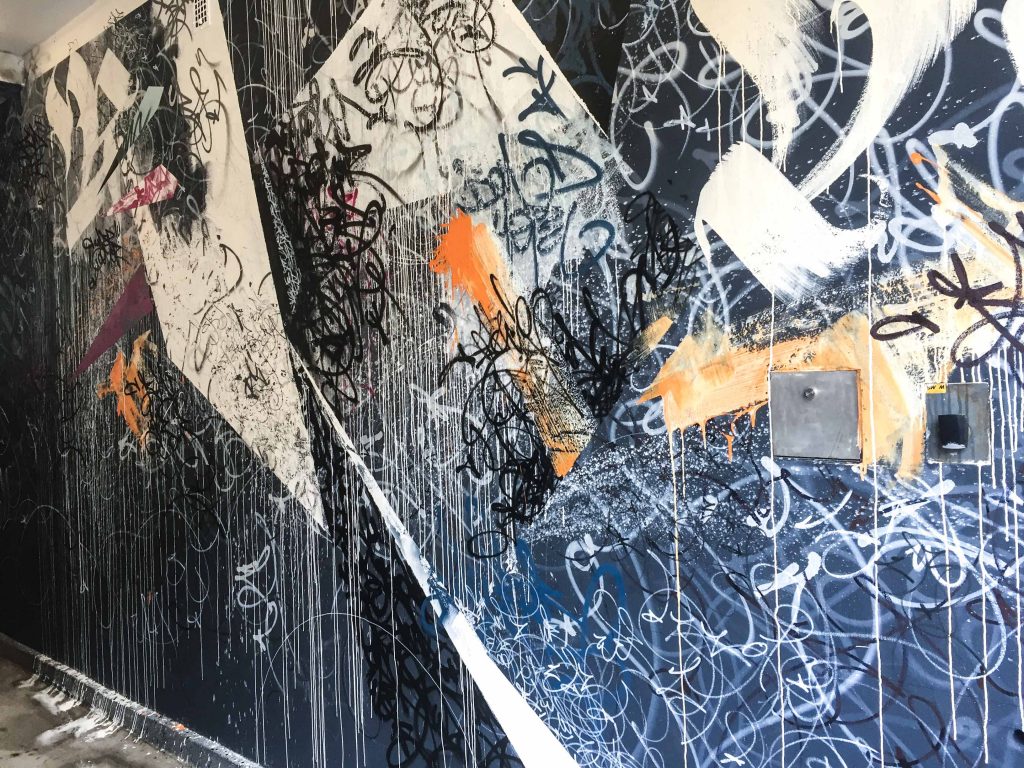
Colourful lettering, artistically painted facades and walls, and entire trains that have been completely designed - graffiti can be found everywhere in the cityscape. This is especially true of Munich, which is considered a "writer city".
Already in the 80s, the scene in Germany was shaped here. Even before Berlin or other cities, it was Munich where a young graffiti crew sprayed the entire length of an S-Bahn train ("Wholetrain").
Munich is also known for its so-called "Hall of Fames", some of which can still be found in the city today.
The Dachauer Straße, where the ART LABORATORY 2 has a high status in the history of street art. Europe's largest "Hall of Fame" (HOF) was located there until 1989. In the graffiti and street art scene, HOF refers to walls that can be legally painted and are constantly being redesigned.
According to the rotation principle, new works crystallised again and again over the course of time. On the one hand, this dynamic of its own can be understood competitively, but it is above all characterised by a high level of respect for the creation of the works of others.
This philosophy is reflected in the design process of the façade of KUNSTLABOR 2 in the former health house at Dachauer Straße 90.
As a tribute to "the Dachauers of the 80s", the outer skin also functions as a HOF. The façade is made available to artists legally and free of charge by the operators of KUNSTLABOR 2. KUNSTLABOR 2 thus supports the idea of providing a creative platform for both renowned and still unknown artists.
Currently, the façade features a joint work by the internationally renowned, photorealistic sprayer Case Maclaim (aka Andreas von Chrzanowski) and the newcomer and tattoo artist Pepe (aka Jose Luis Villanueva Contreras). In the future, too, visitors to KUNSTLABOR 2 will be able to follow the ever-changing design of the HOF live.
To describe the history of graffiti, one has to take a little journey into the past. Because graffiti was already implemented in antiquity and found in various places. Graffiti has been around for around 6,000 years, because even the ancient Egyptians used to scratch inscriptions on stones, walls and buildings. This is how the first graffiti came into being, and it is impossible to imagine history without it. Sometimes it was just an abbreviation of a name, sometimes a date, often there was more behind it for the respective person than was recognisable afterwards. One thing is certain: graffiti are as old as mankind. The desire to immortalise oneself with small and larger works of art on walls, buildings or trees is therefore quite normal and goes back a long time. However, it was only in modern times that graffiti really became salon-worthy and was able to stand out from earlier scribbles that were considered meaningless or less important.
For some, graffiti is illegal and simply vandalism, for fans it is art with a special expression: images, signs, individual lettering: Graffiti is versatile and can range from an artist's abbreviation to expressive images. It is common for graffiti to be made with spray cans. This is where the term sprayer comes from, as graffiti is sprayed on the surface with coloured spray cans. However, graffiti also includes scratching, in which writing and pictures are scratched into surfaces. This variant of graffiti is older than pictures and tags sprayed with paint cans.

A graffiti tag is a kind of signature, an abbreviation that includes the artist's pseudonym. With a tag, the artist immortalises himself on the surface, but they are also used to mark the respective territory of a gang. If you know your way around, you can use tags to find out which territory exists and who is on the spot.
Street art, on the other hand, differs from the classic graffiti tag in that it is more about images, expression and messages. Normally, these images, which are often considered works of art, also contain tags as a kind of signature of the artist.
Graffiti is commonly known as "writing" or "style writing". This is where lettering and images are presented in an aesthetically pleasing way and immortalised on a surface. Artists who have a good style and stand out from others get more recognition than those who make great pictures but have no particular style.
Usually, classic spray cans are used as working material, but also acrylic pens that contain bright colours. This means that graffiti can be much more than just black or white, as it is possible to use all imaginable colours.
Simple and less elaborately designed graffiti tags belong, for example, to gang graffiti as well as to the Ultra movement, which was first observed among Italian football fans. Apart from these two movements, graffiti tends to be artistically sophisticated in design, aiming to be aesthetically pleasing and to communicate a message. Thus, a real expert view of artists is important to distinguish between simple gang or football graffiti and the art form to which street art unquestionably belongs.
Perhaps the best-known graffiti of all was certainly the peace sign, which was suddenly everywhere in the 1960s. The sprayed sign was the basis for many other graffiti that became more prevalent in the 80s. Where exactly the basis for modern graffiti can be found, however, is not entirely clear.
New York, a real stronghold for graffiti artists in the 80s, is counted among the pioneers of the movement. But the movement spilled over into Europe and it was in Munich that graffiti was implemented more strongly. So it was Munich where the first train was completely covered in graffiti and from then on the movement went on and on.
It is interesting to note that the writing culture spilled over from New York and that the graffiti movement in Europe developed differently from that in the USA. As a result, there was more figurative graffiti in Europe and it developed especially strongly in Paris. To this day, Paris is also one of the centres for graffiti and street art and offers a variety of expressions worth seeing.
Today, street art is more sophisticated, often corresponds to real art and is more than just putting a pseudonym on a private or public space. This development is due not least to the greater focus on artworks in metropolises and the growing acceptance of the population.
In the 80s and 90s, graffiti was one thing above all: punishable! Anyone caught spray-painting walls, staircases, facades or trains was liable to prosecution and was hunted down as a vandal. The fines were correspondingly high and it took several years until graffiti was increasingly seen as an expression of art. But it should be noted that it is only allowed if a permit has been obtained. Anyone who simply sprays walls without really being allowed to do so must expect fines if caught. However, it is increasingly possible for private individuals to spray graffiti by arrangement, just as in public spaces. The basic idea of immortalising oneself with tags and simply using the respective surface that is available for this purpose is, however, illegal in any case.
One of Munich's best-known graffiti artists is Mathias Köhler, who, together with his crew, spray-painted Europe's first Wholetrain in 1985 ("Geltendorfer Zug"). Today, Mathias Köhler is known far beyond Munich under his pseudonym "Loomit" and is one of the best-known artists worldwide.
In KUNSTLABOR 2, more than 100 renowned artists have designed the rooms. In addition to Loomit, numerous other local stars of the scene are represented here with their art, such as Eliot the Super.
If there is one city in Germany that offers street art and is completely underestimated, it is Munich. Otherwise, when you think of graffiti and Germany, you immediately think of Berlin, but Munich's street art scene is quite famous in connoisseur circles. And a fact that most people didn't know: Munich is considered the forerunner of the European street art scene!
Within the framework of our MUCA Bike Streetart Tour it is possible to discover the best graffiti spots in the city. In keeping with this, the MUCA Museum offers further highlights for all those who are interested in street art and graffiti as well as in the history, spread and most famous artists.
The public's perception of graffiti has changed and become much more relaxed. Nevertheless, especially in countries like Germany, graffiti is still considered vandalism, is rejected and is often painted over by the public.
But it can also be different, because many people perceive especially artfully designed pictures, walls and facades as real art. The search for street art, the best pictures with a camera (or smartphone) in hand, is therefore always an experience for all fans of graffiti. Therefore, the colourful pictures and lettering cannot be viewed one-sidedly, as there will always be divided opinions and heated discussions around this topic.
But it is also clear that graffiti has become an indispensable part of public life. For that, it's enough to focus on the surroundings when touring a city like Munich - and the artists have a lot to tell, as it turns out.